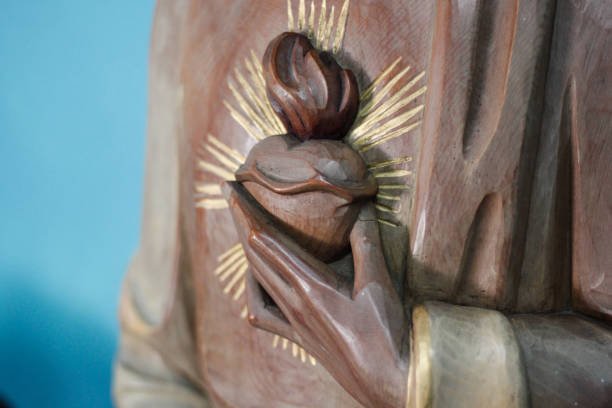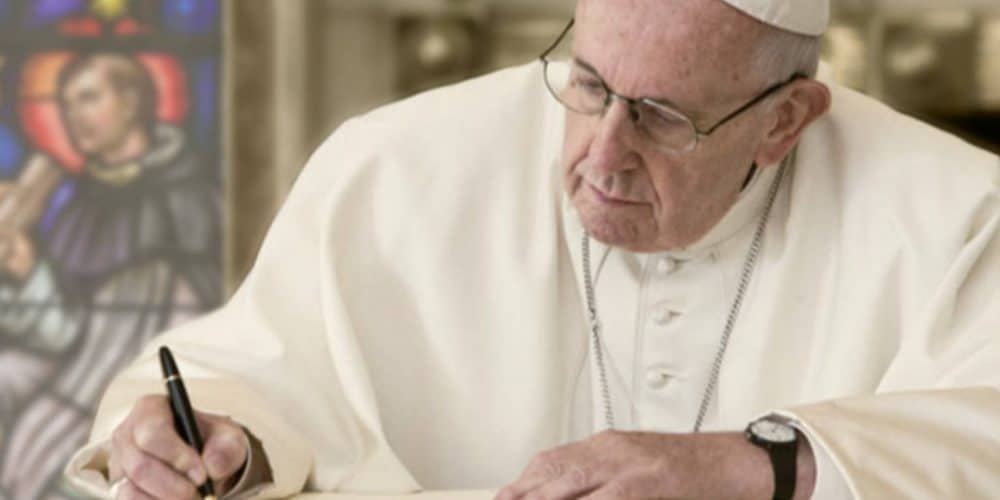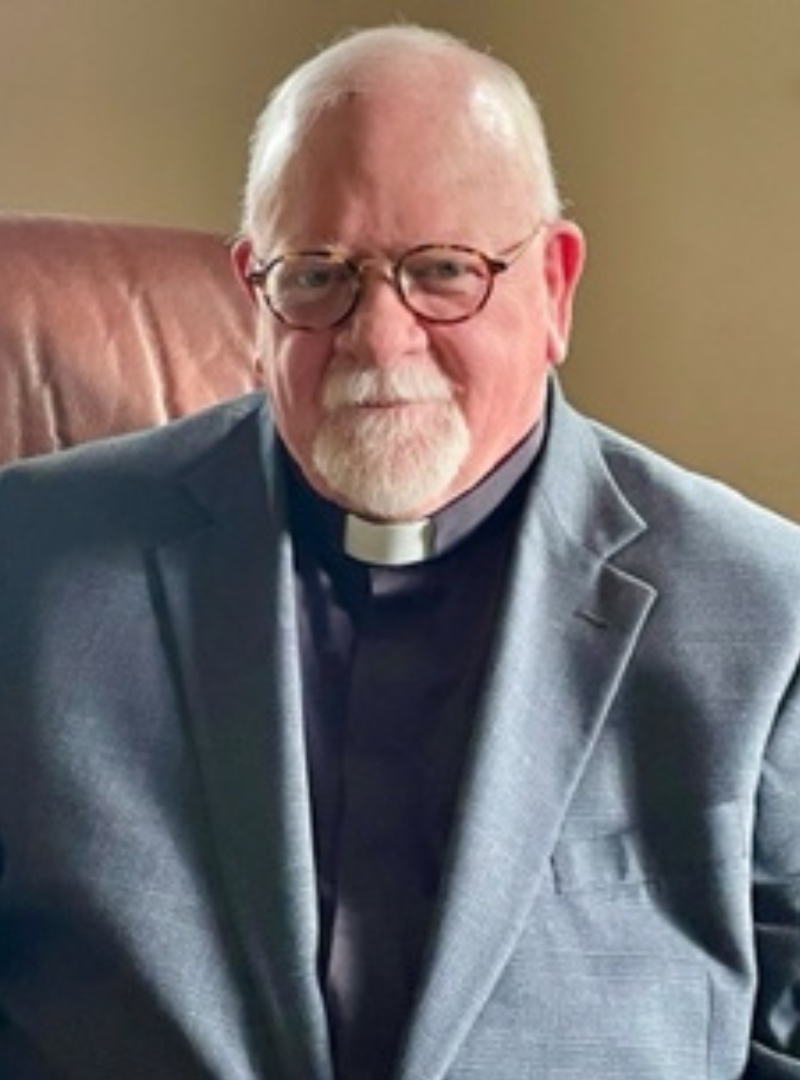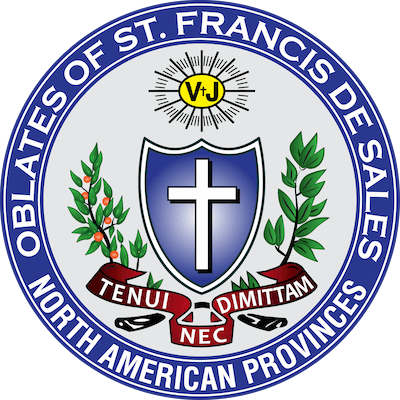In St. Francis de Sales’ most famous work is the Introduction to the Devout Life, he asks us to lead a life of devotion. What does this mean and how can we strive to live a devout life daily?...
Find Your Calcutta
Marching With the Saints
Power of a Burrito
A Wild Love
Center of God’s Heart
God's Love
Spiritual Family Tree
I have always been fascinated by history, especially the history of my family. Learning about my roots and the branches of my family tree always interests me. When I discover someone I never knew existed I get especially excited.
I was recently looking at old census records on ancestry.com and found that my grandfather, Michael Conroy, had a little sister. My family always led me to believe that my grandfather and his four brothers only had one sister (my Aunt Helen). When I looked at the records and census materials online, I realized that my grandfather had a little sister, Nora, who died at the age of ten from influenza.
While I don't have any other information about young Nora Conroy, I do know that she is part of my family story and that she is someone who I can now pray for (and to) as I include all of my aunts, uncles and cousins in my daily prayer.
I thought of Nora when I came across the story of Saint Dominic Savio. Dominic was a young student in Italy who lived a holy life that is still remembered today. On March 9, 1857, Dominic died from complications due to pneumonia at the age of 14. He had just started studying with Father (later Saint) John Bosco to become a priest in the Salesian order.
Dominic never became an official novice or seminarian, but he was certainly Salesian as he followed the teachings of Saint Francis de Sales. Throughout his short life, young Dominic was able to teach others by his example. Dominic showed that holiness can be achieved through the practice of simple, everyday actions in our daily life. Being friendly, faithful and helping others was the way that Dominic put the spirituality of Francis de Sales into practice as a child and teenager.
Dominic once said, "I am not capable of doing big things, but I want to do everything, even the smallest things, for the greater glory of God." Saint John Bosco, Dominic's mentor and guide, later described this young saint as someone who found joy and holiness in doing the ordinary things for love of Jesus. John Bosco would tell the Salesians that "religion must surround us like the air we breathe. Dominic Savio wore holiness like the clothes on his back."
As I wrote a few weeks ago, the Oblates have always considered the Salesians of Don Bosco as spiritual "cousins." Just as I was humbled to find my Aunt Nora in the Conroy family story, it is great to discover that the Oblate family has a young cousin like Dominic Savio in our spiritual family tree. May the example of Saint Dominic inspire all of us - no matter our age - to do the ordinary in an extraordinary way. As we live each day guided by Jesus, may we work each day for holiness. Francis de Sales encouraged us to be close to God with these reassuring words: "Let God be the air in which your heart breathes at ease." May Saint Dominic Savio and all of the deceased members of our own families help us to find holiness in the air and in our hearts.
Provincial, Wilmington-Philadelphia Province
Sacred Heart Valentine
As we approach the middle of February, we don’t have to look too far to see images of Valentine’s Day in homes, shops and supermarkets. Candy, cupids and flowers are also on display, but it is the heart that has become the primary symbol of romance and love. Many histories of Valentine’s Day propose that the stylized image of a human heart became so popular because it appeals to our senses. Most of us understand the importance of the heart for our health and well-being and this has been translated into seeing love as central to our life.
In Catholic culture, the Sacred Heart of Jesus has become an icon of God’s love and mercy. It is a centuries-old tradition that focuses on Christ’s physical heart as a symbol of His love for humanity. The devotion has roots in the Middle Ages but it was in the late 17th century that Jesus appeared to Saint Margaret Mary Alacoque, a Visitation nun in France. The Salesian tradition has always emphasized the love of God and the significance of speaking to one another “heart to heart.” So, it was fitting that Christ chose to communicate His love for all humanity to a spiritual daughter of Saint Francis de Sales and Saint Jane de Chantal.
In many ways, this devotion may have become popular for the same reasons the heart symbol gained prominence among romantics. The Sacred Heart is a very tangible reminder of the love and mercy God has for His children.
The Church encourages us to remember the Heart of Jesus throughout the year. On the first Friday of each month, special prayers, litanies and holy hours are offered as Catholics recall the love of Jesus. The actual feast of the Sacred Heart is celebrated each year a few weeks after Easter and Pentecost.
In popular culture, the month of February is filled with heart shapes, love songs and romantic cards and decorations. As we walk down the aisles of our drugstores and supermarkets, maybe we can walk with Saint Valentine. As a Christian bishop, he often preached the words of Jesus, “Take my yoke upon you and learn from me, for I am gentle and humble of heart, and you will find rest for your souls” (Matthew 11:29).
My hope is that the Heart of Jesus will inspire us all year round. Like Saint Margaret Mary, my prayer is that the Kingdom of Christ will be established in our own hearts. And may we be able to say, along with the disciples walking to Emmaus, “Were not our hearts burning within us when he talked to us on the road and opened the Scriptures to us?” (Luke 24:32).
Reverend Jack Kolodziej, OSFS
Provincial
Wilmington-Philadelphia Province
The Bond of Cousins
Father Jack celebrating the Fouth of July with his cousins ( July 4, 2022).
This week the universal Church celebrated the feast of Saint Francis de Sales. Next week (January 31), we will remember Saint John Bosco. He was so influenced by the teachings and philosophy of the Gentleman Saint, that when he founded a religious order, he named it the Society of St. Francis de Sales (popularly known as the “Salesians” of Don Bosco).
Cousins celebrating Easter in 1972. Father Jack is the little guy in the suit jacket!
Because we share a common patron and were founded around the same time, the Oblates of St. Francis de Sales and the Salesians are often confused. While there are some similarities and connections, we each have our own charism and mission. Using a metaphor we are all familiar with, I tell people that our two religious communities are like “spiritual cousins.”
I grew up in a large Polish and Irish family with lots and lots of cousins. I still see many of them on a regular basis and I consider them not only family, but friends. Many memes and social media posts remind us of the importance of our extended family. One image reads, “Cousins are like the stars – you can’t always seem them, but you know they are always there.” Another quote reminds us that, “cousins are a little bit of childhood that can never be lost.” But my favorite poem states, “side by side or miles apart, cousins will always be connected by the heart.”
I like this saying most because Salesian Spirituality is all about the heart. When we invite Jesus into our lives, he begins to live in our hearts and in our actions. Our devotion to the Lord and our faithful friendship with others help us to put the Gospel into practice. In all of our relationships, we can connect as sisters, as brothers, as cousins. We can see in all people a common humanity and dignity that helps us to love God by loving one another.
The many religious orders that follow the spirit of Saint Francis are all focused on his call to live like Jesus (Vive Jesu). Like cousins who are related but also unique, each group will emphasize a different aspect of the life, example and teaching of the gentle bishop of Geneva. Each community will point to a particular virtue or message of our spiritual father.
All of the followers of Saint Francis – lay, religious and clergy – are connected by the heart. All of us respond, in our own heart, to the call to holiness. Each, in our own vocation, try to live the devout life. Like any family, we are not always successful. We may argue and struggle and sometimes not get along, but we recognize our common bond. Saint Francis told us “we have no bond but the bond of love.” May all of our bonds – those of family and friends – sustain and strengthen us in our journey through life.
Reverend Jack Kolodziej, OSFS
Provincial
Wilmington-Philadelphia Province
Everything Pertains to Love
Those who follow and seek to immerse themselves in the spirituality of Saint Francis de Sales received a gift from Pope Francis on December 28, 2022. On that date, Pope Francis published the Apostolic Letter, Totum Amoris Est, (Everything Pertains to Love) on the fourth centenary of the death of Saint Francis de Sales.
In sending this Letter to the Oblates around the world, our Superior General, Father Barry Strong, OSFS, wrote:
“At his Wednesday General Audience, Pope Francis reflected on the mystery of Christ’s birth and continually drew inspiration from Saint Francis de Sales. During this period of catechesis, he noted that the manger teaches us ‘the perfect renunciation of all goods’ since such a rustic crib combines ‘tenderness and austerity, love and sorrow, sweetness and harshness.’”
Within this context, he (Pope Francis) announced the Apostolic Letter. He remarked, “It is entitled, ‘Everything Pertains to Love,’ taking up a characteristic expression of the holy bishop of Geneva. In fact, this is how he wrote in the Treatise on the Love of God, ‘In the holy Church everything belongs to love, lives in love, is made by love and comes from love.’ And may we all go down this road of love, so beautiful.”
Having read the document, I know I will have to review it many times to reap the fullness of what Saint Francis de Sales and Pope Francis wrote. I found the Letter both inspirational and practical in that the insights of Saint Francis de Sales can lead every soul into a healthy, nourishing relationship with God, allowing them to become living expressions of the Love of God in the world.
A learned Oblate finished reading the Letter and commented, “I have a favorite section from the Letter. It is, ‘For him, (Saint Francis), Christianity was not to be confused with a facile escapism or self-absorption, much less a dull and dreary obedience…Indeed, ‘there are Christians whose lives seem like Lent without Easter’, and while we can understand the grief of people who have to endure great suffering, ‘slowly but surely we all have to let the joy of faith begin to revive as a quiet yet firm trust, even amid the greatest distress.’”
A friend from Denver, a liturgist, musician and author, wrote me stating, “My favorite line of the document is this, attributed to Saint Francis de Sales, ‘Nothing sways the human heart as much as love.’ That’s a meditation all in itself.”
There is so much to reflect upon in the Pope’s Letter that I’m sure others will share their reflections in the coming months. If you’re interested in reading it, you can find it here.
I read the entire document in one sitting. Now I’m going to return to it one section at a time. I’m sure it will inspire future reflections from me in this newsletter. I’d love to read yours.
Father Jack Loughran, OSFS
Provincial
Toledo-Detroit Province
Advent Love
When thinking about joy, I distinguish it from happiness. Here, too, I want to distinguish love from like. Because of my own human frailty and temperament, there are some people who I struggle to like. The situation usually has more to do with me than the other person. A dear friend once told me that if I like someone, that person can do anything, and it would be fine with me. But, if I dislike someone, the smallest thing she/he did that I find unacceptable would be catastrophic. I want to believe that I have improved upon this significantly. It has often been said that we don’t have to like everyone, but we are called to love everyone. I think this has something to do with the fact that “love is of God.”
In his remarkable 10-DVD series Catholicism, Robert Barron defines love as “willing the good of the other as other.” That is wanting what is best for another simple because they are other and not for what it could do for me. The “good” that I will for him would be to know God more fully, so that his heart would change and the violence cease. Whether we can see the image and likeness of God in others does not take away this presence within another. Perhaps our love for another can make this clearer, more recognizable.
We must love because it has been mandated by Jesus. Further, he takes this love to the highest level, “Love one another as I have loved you.” This is a love that is total, complete, infinite, without merit, always on display, non-judgmental and a free gift. We get a clear glimpse of this in spousal love, in parental love, and in the love shared between the best of friends. Perhaps the best manifestation of this love is in prayer where we sit in total acceptance of the One who smiles on us, seeing us as so deserving of God’s infinite love even when this utterly amazes us. Richard Rohr wrote, “Most of us were taught that God would love us if and when we change. In fact, God loves you so that you can change. What empowers change, what makes you desirous of change is the experience of love. It is that inherent experience of love that becomes the engine of change.” We must love because love is of God. To love as God loves is indeed a very tall order. We need great patience in this task for we are of God but not God. So, our love is a process and somewhat imperfect. Thus, Saint Francis de Sales often reminded people that perfection consists not in being perfect but in trying to be perfect. It’s all in the trying. What makes this doable speaks to Rohr’s point by letting God love us first. For de Sales, this was a no-brainer, especially recognizing his favorite scripture was the Song of Songs, one great love song where the lover woos the beloved. God takes the initiative because God wants to be with us, embracing us, holding and kissing us, the beloved. We read in scripture, “See what love the Father has bestowed on us that we may be called the children of God. Yet so we are. The reason the world does not recognize us is that it did not know Him. Beloved, we are God’s children now; what we shall be has not yet been revealed. We do know that when it is revealed we shall be like Him, for we shall see Him as He is” (1 John 3: 1-2).
Advent love reminds us of this promise yearly that we may fortify our efforts to love others as Christ has loved us. It enables us to be loved fully and completely, warts and all. It grounds us in a place of humility before God, so that in Salesian thought, we may be gentle toward others. We are loved infinitely, so that we may, in turn, wish this for all others. To love another is to will the good of the other as other. “To love another person is to see the face of God,” as proclaimed in the epilogue of Les Misérables.
Advent love is a beautiful baby, born homeless in a manger, who shepherds and kings traveled to worship in awe but selected a different way home. So too, our lives must change direction once we have met the Savior, the Prince of Peace, the author and sustainer of love. It’s now a life of love.
Father John Fisher, OSFS
Pastor
Our Mother of Consolation Parish
Philadelphia, PA
